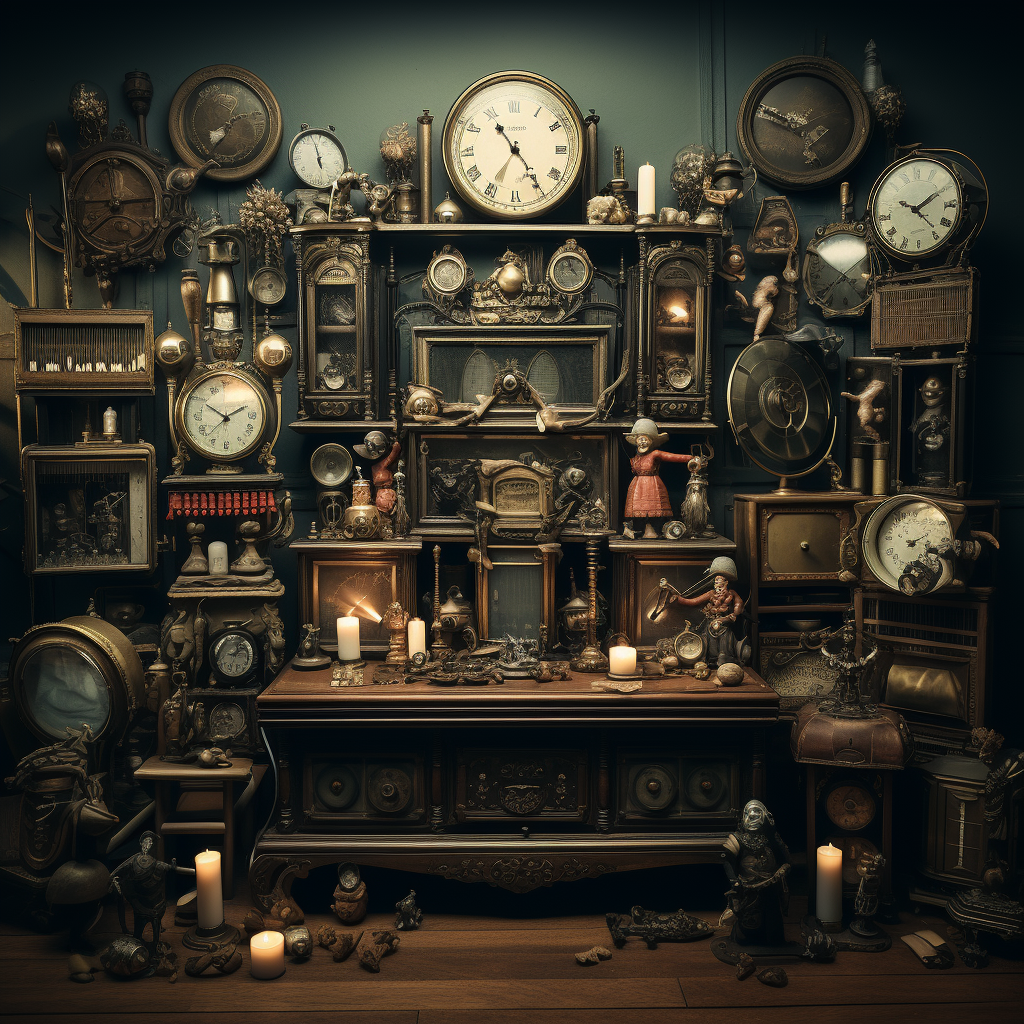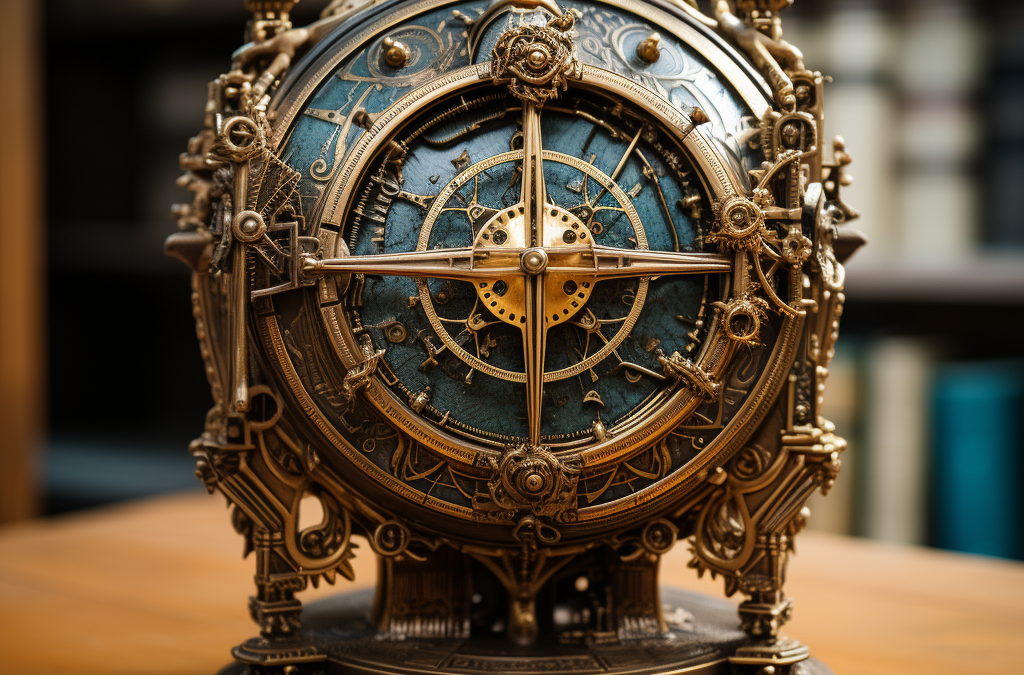The integration of Non-Fungible Tokens (NFTs) into the antique market has sparked a considerable amount of interest and speculation. This innovative technology has the potential to revolutionize how collectors preserve and trade historical artifacts. Let’s delve into the significance of NFTs for the future of the antique market.
Ever wonder how we can ensure the preservation of our rich historical artifacts in this fast-paced digital age? As antique collectors, we understand the significance of maintaining our cultural heritage and sharing it with future generations. That’s where NFTs come in. Non-fungible tokens have been making waves in the digital world, revolutionizing the way we buy, sell, and preserve unique items. In this blog, we delve into the world of NFTs and explore why they matter for antique collectors like us.
In this informative piece, we’ll address the pain points that arise when it comes to preserving history in the digital era. We’ll discuss how NFTs provide a solution by creating a secure and transparent platform for the ownership and trading of digital collectibles. From the challenges of provenance to the benefits of decentralized ownership, we’ll explore the various aspects of using NFTs for antique collecting. Get ready to dive into the exciting world of NFTs and discover how they can help us preserve our cherished artifacts in the digital age.
Short Summary
- NFTs (non-fungible tokens) are revolutionizing the way we buy, sell, and preserve unique items, benefiting antique collectors in the digital age.
- NFTs provide a secure and transparent platform for the ownership and trading of digital collectibles, solving challenges related to provenance and decentralized ownership.
- NFTs bridge the gap between physical and digital objects, allowing antique collectors to maintain the value and authenticity of their cherished artifacts.
- The future of the antique market is closely intertwined with NFTs, presenting new opportunities for antique collectors and the preservation of history in the digital realm.
1. Authenticity and Ownership Verification
NFTs provide a foolproof method to establish the provenance and ownership of antique items. With NFTs, collectors can attach a unique digital token to each object, creating a verifiable digital certificate of authenticity. This feature ensures that the provenance of an antique can be traced back to its origin, eliminating doubts about its authenticity. Collectors and buyers can have peace of mind that they are investing in genuine historical items.
2. Immutable Digital Records
One of the primary advantages of NFTs is their ability to create immutable digital records on the blockchain. These records can capture crucial details about each antique, such as its historical context, previous owners, and key events associated with it. This information adds an extra layer of value to the object and ensures its historical significance is preserved for future generations. By utilizing NFTs, the intricate stories behind each antique can be safeguarded and easily accessible.
3. Global Market Access
By digitizing antique items through NFTs, collectors can tap into a global market of enthusiasts and investors. Traditionally, the antique market was confined to physical galleries and auction houses. However, NFTs open up new avenues for collectors to showcase and trade their pieces online, breaking down geographical barriers and expanding their reach to a worldwide audience. This increased accessibility to potential buyers can lead to better price discovery and appreciation of the value of antiques.
4. Fractional Ownership
NFTs also enable the concept of fractional ownership within the antique market. In the past, only extremely wealthy collectors could afford to own rare and valuable antiques. However, with NFTs, ownership can be divided into digitally represented shares, allowing multiple investors to collectively own a piece. This democratization of ownership makes previously unattainable antiques accessible to a broader range of enthusiasts, further diversifying and expanding the antique market.
NFTs as a New Opportunity for Antique Collectors
In recent years, the world of antique collecting has seen a significant shift with the emergence of NFTs (Non-Fungible Tokens). These digital tokens, built on blockchain technology, are revolutionizing the way collectors engage with and preserve historical artifacts. In this section, we will explore how NFTs are providing a new opportunity for antique collectors to expand their collections and navigate the digital age.
1. Understanding NFTs and their Significance:
NFTs are unique digital assets that cannot be replicated or replaced, making them ideal for representing one-of-a-kind antiques.
These tokens are bought, sold, and traded on blockchain platforms, providing a secure and transparent way to verify ownership and provenance.
NFTs offer a way to bridge the gap between physical and digital items, enabling collectors to digitize and preserve their antique collections in a virtual format.
2. Preserving Antiques through Digital Ownership:
NFTs allow antique collectors to create digital representations of their physical artifacts, safeguarding their historical value for future generations.
By minting an NFT for an antique, collectors can ensure its authenticity, traceability, and ownership, even if the physical object changes hands.
This digital ownership opens up new possibilities for showcasing and sharing the historical significance of antiques with a global audience.
3. Expanding the Reach of Antique Collections:
NFTs provide collectors with a broader platform to exhibit and sell their antique collections to a worldwide audience.
Online marketplaces dedicated to NFTs allow collectors to connect with a community of digital art enthusiasts and antique connoisseurs.
Through NFTs, antique collectors can reach new demographics, extend their influence, and attract potential buyers who may appreciate the historical value of their artifacts.
4. Enhancing the Discoverability and Research of Antiques:
With NFTs, collectors can attach rich metadata to their digital representations, providing detailed information about the history, origins, and significance of each antique.
This metadata can include supporting documents, references, and links to scholarly articles, offering researchers and historians a wealth of resources for further exploration.
By fostering an interconnected network of NFTs, antique collectors are contributing to the preservation and dissemination of historical knowledge.
NFT Glossary: Understanding the Language of the Digital Collectibles

In the world of digital collectibles, understanding the language and terminology used can be crucial for collectors and enthusiasts alike. To navigate the NFT (Non-Fungible Token) space, it’s important to familiarize yourself with key terms that are frequently used. Here, we provide a comprehensive glossary to help you grasp the language of digital collectibles:
1. Non-Fungible Token (NFT): A unique digital asset that represents ownership or proof of authenticity for a specific item or piece of content.
2. Blockchain: A decentralized digital ledger where NFTs are stored and verified, ensuring transparency and security.
3. Digital Collectibles: Unique items such as artwork, music, videos, or virtual real estate that exist solely in digital form and can be bought, sold, and owned using NFTs.
4. Minting: The process of creating and registering a new NFT on the blockchain, giving it a unique identity and ownership record.
5. Smart Contract: A self-executing digital contract that defines the terms and conditions of an NFT, including ownership rights, royalties, and permissions.
6. Wallet: A digital storage space where users can securely store, view, and manage their NFTs and cryptocurrencies.
7. Metadata: Additional information associated with an NFT, including the creator’s name, description, image, or any other relevant details.
8. Gas Fees: The transaction fees paid in cryptocurrency (usually Ether) for executing operations on the blockchain, such as minting or buying NFTs.
9. Marketplace: An online platform where buyers and sellers can trade NFTs, discover new collections, and engage with the digital collectibles community.
10. Rarity: A measure of how unique or scarce an NFT is within a specific collection, influencing its market value and desirability.
11. Proof of Authenticity: The cryptographic verification that ensures the originality and ownership of an NFT, preventing unauthorized copies or forgeries.
By familiarizing yourself with these fundamental terms, you’ll be better equipped to engage in the world of digital collectibles. Whether you’re considering purchasing your first NFT or want to enhance your knowledge, understanding the language of the digital collectibles market is essential.
The Impact of NFTs on the Preservation of History
In the ever-evolving digital age, the preservation of history has taken a new turn with the advent of Non-Fungible Tokens (NFTs). NFTs, a form of digital asset backed by blockchain technology, have garnered significant attention in recent years. But what exactly is their impact on the preservation of history, especially for antique collectors? Let’s delve into this fascinating topic.
1. Authenticity in the Digital Realm:
NFTs have revolutionized the way we authenticate and verify the ownership of digital assets, including historical artifacts. By utilizing blockchain technology, NFTs provide a unique cryptographic signature and timestamp for each asset, ensuring its authenticity. This has profound implications for antique collectors, as it allows them to confidently verify the provenance of digitized historical items.
2. Immutable Recordkeeping:
One of the key benefits of NFTs is their ability to establish an immutable record of ownership and transaction history. In the context of preserving history, this means that each transfer of a digitized antique or historical artifact can be reliably recorded and traced. Such transparency is crucial for maintaining an accurate historical narrative and preventing fraud or forgery.
3. Empowering Individual Ownership:
NFTs have democratized the ownership of historical artifacts by breaking the barriers of physical possession. Through tokenization, collectors can own a fraction or even the whole of a digitized antique, granting them unprecedented access to history. This decentralization of ownership fosters a greater sense of inclusivity and encourages wider participation in the preservation of our cultural heritage.
4. Digital Restoration and Preservation:
Preserving physical artifacts can be a challenging and costly endeavor, prone to damage, deterioration, and loss. However, NFTs offer a unique opportunity to digitally restore and preserve historical items. By creating high-resolution, authenticated digital copies, NFTs ensure that even if the physical object is lost or destroyed, its essence can be immortalized and accessible to future generations.
5. Global Accessibility and Education:
The digital nature of NFTs enables global accessibility to historical artifacts that may otherwise be locked away in private collections or limited to specific geographic locations. Through online platforms, people around the world can explore and learn about our shared history, expanding educational opportunities and promoting cultural exchange. NFTs have the potential to bridge the gap between collectors, historians, and enthusiasts, fostering a deeper understanding and appreciation of our past.
Exploring the Potential Risks and Future of NFTs
As the world of digital collectibles continues to evolve, it is crucial for antique collectors to understand the potential risks and future implications of Non-Fungible Tokens (NFTs). While NFTs offer exciting opportunities for preserving history in the digital age, there are also certain considerations and challenges that need to be addressed.
1. Volatility in the NFT Market:
Like any investment, NFTs are subject to market volatility. Prices can fluctuate drastically, making it essential for collectors to carefully evaluate their options before jumping into the market.
Unlike physical antiques, the value of NFTs can be highly speculative and influenced by trends and popularity. Collectors must be cautious and make informed decisions based on thorough research and analysis.
2. Risk of Counterfeiting and Authenticity:
Ensuring authenticity can be a significant concern when it comes to NFTs. While blockchain technology provides transparency and traceability, counterfeit NFTs can still surface.
Collectors should prioritize platforms and marketplaces with robust verification mechanisms, and conduct due diligence to verify the authenticity of the digital assets they are acquiring.
3. Legal and Copyright Concerns:
Copyright issues and intellectual property rights are emerging challenges in the NFT landscape. It’s crucial for collectors to understand the legal implications and potential risks associated with owning and trading NFTs, especially when it comes to historical artifacts or copyrighted content.
Seeking legal advice and staying updated on copyright laws related to NFTs can help protect collectors and ensure compliance within the digital art market.
4. Environmental Impact of NFTs:
The Ethereum blockchain, which is commonly used for NFT transactions, relies on a substantial amount of energy consumption. This has raised concerns about the environmental impact of NFTs and the carbon footprint associated with their creation and transactions.
Collectors who are conscious of sustainability may want to explore alternative blockchain technologies or platforms that prioritize eco-friendly practices.
Looking toward the future:
While NFTs present certain risks, it’s also essential to consider their potential benefits for antique collectors. NFTs offer unprecedented opportunities to digitize and preserve historical artifacts, making them accessible to a wider audience. By leveraging blockchain technology, provenance and ownership can be securely tracked, enhancing the value and authenticity of antique collections.
FAQ
What are the risks of using NFT?
NFTs can have significant risks for antique collectors, including the risk of theft, loss, or damage. By understanding these risks, collectors can take steps to mitigate them.
What are the challenges of using NFTs?
NFTs can present a number of challenges for antique collectors, including the fact that they can be difficult to store and manage. Additionally, because they can be transferred using blockchain technology, they can also be a source of security and privacy concerns.
What are the challenges of using NFTs in the art world?
NFTs present a unique challenge for art collectors because they offer a way to securely and transparently share and manage ownership of artwork. However, there are a number of challenges that must be addressed in order to make NFTs an effective tool for preserving history in the digital age.
What are the benefits of using NFTs?
One of the key benefits of using NFTs is that they can help preserve history in the digital age. With NFTs, antique collectors can store and manage their collections in a way that is secure, transparent, and easily shareable.
What is an NFT?
Non-fungible token (NFT) is a digital asset that is unique, unlike digital coins and tokens that are fungible. An NFT is a digital representation of a physical asset, such as a collectible item, and can be used to purchase goods and services.
Other Websites by System Ent Corp:
https://eyeofunity.com
https://meteyeverse.com
https://000arcade.com
https://00arcade.com
https://albertbrain.com
https://lastdaystore.com
https://wealth-financing.com
https://techgenstore.com
https://systementcorp.com
https://controlsecret.com
https://realufopics.com
https://officialmikemc.com
https://keyselfdefense.com
https://ashleymega.com
https://findwebcost.com

